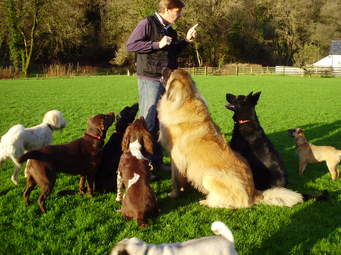Dog training
Education with fun and motivation: dog training
During obedience training, the dog learns to follow your commands. This ensures safety in everyday life and ensures that your animal does not harm its environment through naughty behavior.
Dog training should begin with the basic commands such as "by foot" or "seat" in puppy age and can later be expanded to include more complex tasks such as retrieving.
The most important lesson that everyone else builds on is dog acceptance of your leadership role. Even if it is sometimes difficult, you always have to be consistent and act as a "pack leader". Otherwise the four-legged friend will contest the first place again and again and try to position itself as an alpha animal.
Praise brings more than punishment
Your "promotion" to the boss should not lead to punishments for wrongdoing, but to praise and positive motivation. As a result, the dog has more fun training and builds a relationship of trust with you.
Penalties, on the other hand, have an unsettling effect on the four-legged friend and, in extreme cases, can cause behavioral problems.
However, you should never overdo it with the reward and, for example, pull out a treat after every command you follow. The dog would no longer obey without bites and might get weight problems from too many treats.
Verbal praise and caresses are also useful. But only if the timing is right. The commendation must take place the moment the dog has carried out the command. Time delays would confuse the animal and lead to incorrect links.
Slowly expand the range of tasks
It is also crucial for the success of the training that your commands are always clear.
Do not vary the commands, but stick to one version and always underline your instructions in the same tone and with the same gesture. In order to keep the dog training exciting and to secure the attention of your four-legged friend, you should gradually string several commands together.
Once the dog has learned "space", move away and order "stay". In this way, you slowly expand the range of instructions and do not overwhelm the animal with tasks that are too complex.
Dog Training
- Juan Dela Cruz


